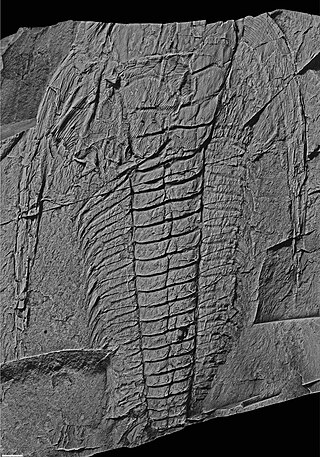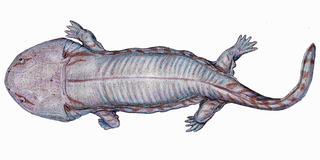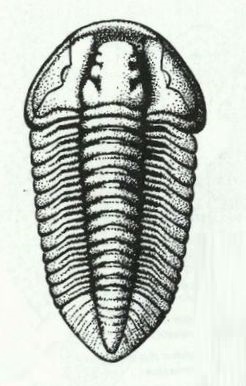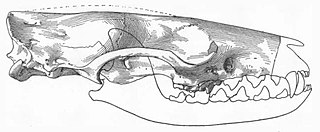
Dr Thomas Wright FRS FRSE FGS was a Scottish surgeon and palaeontologist.

John William Salter was an English naturalist, geologist, and palaeontologist.

Plesiosiro is an extinct arachnid genus known exclusively from nine specimens from the Upper Carboniferous of Coseley, Staffordshire, United Kingdom. The genus is monotypic, represented only by the species Plesiosiro madeleyi described by Reginald Innes Pocock in his important 1911 monograph on British Carboniferous arachnids. It is the only known member of the order Haptopoda.

Wilfred Hudleston Hudleston FRS was an English geologist, ornithologist and paleontologist.
Oliver Meredith Boone Bulman was a British palaeontologist. He was Woodwardian Professor of Geology at the University of Cambridge.
Dolerorthis is an extinct genus of hesperorthid brachiopod. The type species of this genus, D. interplicata, was described from the Silurian (Telychian) Osgood Formation. Other species belonging to this genus are known from the Ordovician and Silurian of Europe, Kazakhstan, China and Argentina. It was roughly 4 centimetres (1.6 in) across.
The Eifelian is the first of two faunal stages in the Middle Devonian Epoch. It lasted from 393.3 ± 1.2 million years ago to 387.7 ± 0.8 million years ago. It was preceded by the Emsian Stage and followed by the Givetian Stage.

The Stereospondyli are a group of extinct temnospondyl amphibians that existed primarily during the Mesozoic period. They are known from all seven continents and were common components of many Triassic ecosystems, likely filling a similar ecological niche to modern crocodilians prior to the diversification of pseudosuchian archosaurs.

Flexicalymene Shirley, 1936. is a genus of trilobites belonging to the order Phacopida, suborder Calymenina and Family Calymenidae. Flexicalymene specimens can be mistaken for Calymene, Gravicalymene, Diacalymene and a few other Calymenina genera. They are used as an index fossil in the Ordovician. Ohio and North America are particularly known for being rich with Flexicalymene fossils.

Eretmosaurus is an extinct genus of plesiosaur.

Kentisuchus is an extinct genus of gavialoid crocodylian, traditionally regarded as a member of the subfamily Tomistominae. Fossils have been found from England and France that date back to the early Eocene. The genus has also been recorded from Ukraine, but it unclear whether specimens from Ukraine are referable to Kentisuchus.
Sir (Cyril) James Stubblefield FRS (1901–1999) was a British geologist. Stubblefield was president of the Geological Society of London from 1958 to 1960 and was director of the Geological Survey of Great Britain from 1960 until 1966.

Duplicaria tristis is a species of sea snail, a marine gastropod mollusk in the family Terebridae, the auger snails.
The Palaeontographical Society is a learned society, established in 1847, and is the oldest extant Society devoted to the advancement of palaeontological knowledge.
Ida Lilian Slater (1881–1969) was a British geologist who made important contributions to the study of conulariids. She was jointly awarded the Daniel Pidgeon Fund with Helen Drew to undertake field work investigating the Palaeozoic rocks of Wales.
Helen Marguerite Muir-Wood was a British paleontologist and historian of paleontology who spent her career at London's Natural History Museum. She is a recipient of the prestigious Lyell Medal for her contributions to the field.

Viverravus is an extinct genus of placental mammals from extinct subfamily Viverravinae within extinct family Viverravidae, that lived in North America, Europe and Asia from the middle Paleocene to middle Eocene.

Villebrunaster is an extinct genus of starfish-like animal belonging to Asterozoa that lived around 480 million years ago during Early Ordovician Period in modern-day southern France and Morocco. As of 2022, it contains two species, namely V. thorali and V. fezouataensis. V. thorali was described in 1951 and V. fezouataensis was described in 2021. Villebrunaster represents one of the oldest members of asterozoans, and perhaps, according to a description in 2021, the earliest divergent stem-group of Asterozoa.











